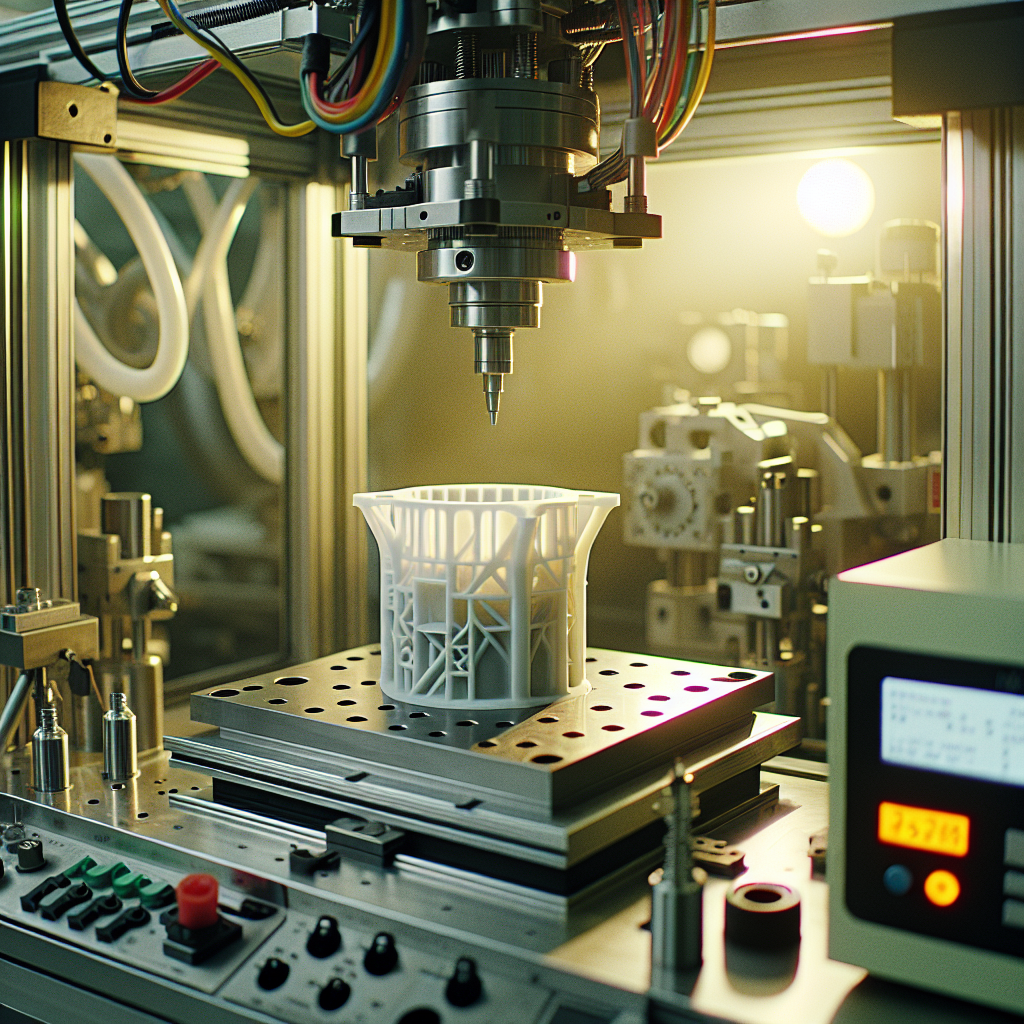Automation has revolutionized the manufacturing industry in recent years, providing a range of benefits to businesses across various sectors. One industry that stands to benefit significantly from automation is the furniture manufacturing industry.
The use of automation in furniture manufacturing can lead to significant cost savings. For example, a furniture manufacturer in North Carolina was able to save $800,000 per year by using robots to automate their wood sanding and finishing processes.
Automation in furniture manufacturing involves the use of technology to perform tasks that were previously performed by human workers. This technology includes robotics, computer software, and automated machines that can perform repetitive tasks with great accuracy and efficiency.
The benefits of investing in automation for furniture manufacturers are numerous. It can improve efficiency, save costs, improve quality, and increase productivity, among other benefits. Automation can also help furniture manufacturers meet customer demands faster and with greater accuracy, giving them a competitive advantage in the market.

This article will explore in detail the various benefits of investing in automation for furniture manufacturers and highlight some of the key ways in which automation can improve the overall efficiency and profitability of their operations.
- Brief Overview of the Benefits of Investing in Automation for Furniture Manufacturers
- Improved Efficiency
- Cost Savings
- Improved Quality
- Increased Productivity
- How can Furniture Manufacturers Utilize Automation in their Operations?
- Consider MRP and ERP Systems to Automate Routine Business Tasks
- How can Deskera Help You?
- Key Takeaways
- Related Articles
Brief Overview of the Benefits of Investing in Automation for Furniture Manufacturers
Investing in automation for furniture manufacturers offers a range of benefits, including improved efficiency, cost savings, improved quality, and increased productivity. Automation allows furniture manufacturers to produce high-quality furniture products quickly and efficiently while reducing labor costs and increasing output.
Improved efficiency is one of the most significant benefits of automation. By using robots and automated systems, furniture manufacturers can optimize their production processes and reduce the time and effort required to produce furniture. This, in turn, can result in increased productivity and lower production costs.
Cost savings are another major benefit of automation. By reducing labor costs and increasing efficiency, furniture manufacturers can save significant amounts of money in the long run. Automated systems also tend to have a longer lifespan than manual equipment, reducing maintenance and replacement costs.
Improved quality is yet another benefit of automation. With automated systems, furniture manufacturers can ensure that their products meet the highest quality standards by eliminating human error and increasing precision in production. This can result in fewer defects and customer complaints, which can improve customer satisfaction and brand reputation.
Finally, increased productivity is a significant benefit of automation. Automated systems can produce more products in less time, allowing furniture manufacturers to meet customer demands faster and increase their output. This, in turn, can lead to increased profits and a competitive advantage in the market.
Improved Efficiency
Improved efficiency is one of the most significant benefits of investing in automation for furniture manufacturers. By automating certain processes, furniture manufacturers can optimize their production processes, reduce manual labor requirements, and improve their overall production speed and accuracy.
In this section, we will discuss in detail how automation can increase efficiency in furniture manufacturing. We will explore the various automated processes used in furniture manufacturing, compare them to manual processes, and highlight the benefits that furniture manufacturers can gain by automating their operations.
Through this discussion, we will show how automation can help furniture manufacturers streamline their operations, reduce costs, and ultimately, produce high-quality furniture products more efficiently.
Explanation of How Automation can Increase Efficiency in Furniture Manufacturing
Automation can increase efficiency in furniture manufacturing in several ways. First, automated systems can perform tasks more quickly and accurately than human workers, reducing production time and increasing output. For example, automated saws can cut wood faster and more precisely than manual saws, resulting in increased production speed and reduced waste.
Second, automation can reduce the need for manual labor, freeing up workers to perform more complex tasks that require human skills and knowledge. This, in turn, can help furniture manufacturers optimize their production processes and increase efficiency.
Third, automated systems can perform tasks consistently, reducing the risk of errors and defects. For example, automated drilling machines can ensure that holes are drilled at the same depth and angle every time, resulting in consistent quality and reduced waste.
Fourth, automation can help furniture manufacturers monitor and optimize their production processes in real-time. By using sensors and data analytics, automated systems can collect data on production processes and identify areas where improvements can be made. This can help furniture manufacturers identify bottlenecks in their production process and optimize their operations for greater efficiency.
Overall, automation can help furniture manufacturers increase efficiency by reducing production time, optimizing their production processes, and increasing output. By investing in automation, furniture manufacturers can improve their overall productivity and profitability while producing high-quality furniture products more efficiently.
Examples of Automated Processes in Furniture Manufacturing
There are several automated processes that can be used in furniture manufacturing to increase efficiency and reduce manual labor requirements. Here are a few examples:
- CNC (Computer Numerical Control) Machining: CNC machines use computer software to control the movement of cutting tools to shape wood or other materials. These machines can create complex shapes and designs with high accuracy and consistency.
- Edgebanding: Edgebanding is the process of applying a strip of material to the edge of a piece of wood to create a finished look. This process can be automated using machines that apply the edgebanding material with high accuracy and speed.
- Sanding and Finishing: Sanding and finishing wood is a time-consuming process that can be automated using robots. Automated sanding and finishing machines can sand and polish wood to a high-quality finish with greater accuracy and consistency than manual methods.
- Upholstery: Upholstery involves covering furniture with fabric or leather. This process can be automated using machines that cut and sew fabric or leather to the required shape and size.
- Assembly: Assembly is the process of putting together different components to create a finished piece of furniture. Automated assembly machines can put together different components with greater speed and accuracy than manual labor.
These are just a few examples of the many automated processes that can be used in furniture manufacturing. By using these automated processes, furniture manufacturers can increase efficiency, reduce labor costs, and produce high-quality furniture products more efficiently.
Comparison of Manual Vs. Automated Processes
When it comes to furniture manufacturing, manual processes have been traditionally used. However, with the advent of automation technology, more and more furniture manufacturers are opting for automated processes. Here is a comparison of manual vs. automated processes in furniture manufacturing:
- Speed: Automated processes are generally faster than manual processes. Automated machines can complete tasks at a higher speed, resulting in increased production and faster delivery times.
- Accuracy: Automated processes are more accurate than manual processes. Machines can perform tasks with consistent precision, eliminating the variability that comes with human labor.
- Labor costs: Manual processes require a significant amount of manual labor, which can be costly. Automated processes, on the other hand, require less labor, which can result in significant cost savings.
- Quality: Automated processes can result in higher quality products than manual processes. Automated machines can perform tasks with greater consistency, resulting in fewer defects and higher-quality products.
- Flexibility: Manual processes offer greater flexibility than automated processes. Workers can adapt to changing needs and make adjustments on the fly. Automated processes, on the other hand, are less flexible and require more planning and setup time.
- Maintenance: Automated machines require more maintenance than manual processes. However, they tend to have a longer lifespan and can be more reliable in the long run.
In summary, while manual processes offer more flexibility, automated processes are generally faster, more accurate, and more cost-effective. As a result, furniture manufacturers are increasingly turning to automation to optimize their production processes and improve efficiency.
Cost Savings
Cost savings is one of the primary benefits of investing in automation for furniture manufacturers. By automating certain processes, furniture manufacturers can reduce labor costs, optimize their production processes, and minimize waste.
In this section, we will discuss in detail how automation can help furniture manufacturers save costs. We will explore the various cost-saving benefits of automation, such as reducing labor costs, minimizing material waste, and optimizing production processes.
Through this discussion, we will show how automation can help furniture manufacturers increase their profitability while producing high-quality furniture products more efficiently.
Explanation of How Automation can Save Costs in Furniture Manufacturing
Automation can save costs in furniture manufacturing in several ways.
First, automated processes require less labor than manual processes. This reduces the labor costs associated with furniture production. Automated machines can perform tasks such as cutting, drilling, and sanding with minimal supervision, freeing up workers to focus on more complex tasks. This can help furniture manufacturers optimize their workforce and reduce labor costs.
Second, automation can help furniture manufacturers minimize material waste. Automated machines can perform tasks such as cutting and drilling with greater precision, resulting in less material waste than manual labor. This can help furniture manufacturers reduce their material costs and increase their profitability.
Third, automation can help furniture manufacturers optimize their production processes. By using sensors and data analytics, automated systems can collect data on production processes and identify areas where improvements can be made.
This can help furniture manufacturers identify bottlenecks in their production process and optimize their operations for greater efficiency. This, in turn, can reduce costs associated with production delays and increase output.
Fourth, automation can help furniture manufacturers produce high-quality furniture products more efficiently. Automated machines can perform tasks with greater consistency and accuracy than manual labor. This can result in fewer defects and higher-quality products, reducing the costs associated with rework and customer returns.
Overall, automation can help furniture manufacturers save costs by reducing labor costs, minimizing material waste, optimizing production processes, and producing high-quality furniture products more efficiently. By investing in automation, furniture manufacturers can increase their profitability while producing high-quality furniture products more efficiently.
Examples of Cost Savings from Automation
Here are some examples of cost savings that furniture manufacturers can achieve through automation:
- Labor costs: By automating certain processes, furniture manufacturers can reduce their labor costs. For example, by using automated machines for cutting, drilling, and sanding, manufacturers can reduce the number of workers needed for these tasks, resulting in significant cost savings.
- Material waste: Automated machines can perform tasks with greater precision than manual labor, resulting in less material waste. By reducing waste, manufacturers can reduce their material costs and increase their profitability.
- Production optimization: By using sensors and data analytics, automated systems can collect data on production processes and identify areas where improvements can be made. This can help furniture manufacturers optimize their operations for greater efficiency, reducing costs associated with production delays and increasing output.
- Higher quality products: Automated machines can perform tasks with greater consistency and accuracy than manual labor, resulting in higher-quality products. By reducing the number of defects and customer returns, furniture manufacturers can save costs associated with rework and improve customer satisfaction.
- Reduced energy consumption: Some automated machines are designed to be energy-efficient, using less energy than traditional machines. By reducing their energy consumption, furniture manufacturers can save costs associated with energy bills.
In summary, automation can provide furniture manufacturers with significant cost savings by reducing labor costs, minimizing material waste, optimizing production processes, producing higher quality products, and reducing energy consumption. By investing in automation, furniture manufacturers can achieve cost savings that can help them increase profitability and remain competitive in the market.
Comparison of Costs between Manual Vs. Automated Processes
When comparing costs between manual and automated processes in furniture manufacturing, there are several factors to consider. Here are some key differences:
- Labor costs: Manual processes require more labor than automated processes, resulting in higher labor costs. Automated machines can perform tasks with minimal supervision, reducing the number of workers needed for certain tasks.
- Equipment costs: Automated machines can be more expensive than manual tools, resulting in higher equipment costs. However, this cost can be offset by the long-term cost savings that automation provides.
- Material waste: Manual processes can result in more material waste than automated processes, resulting in higher material costs. Automated machines can perform tasks with greater precision, reducing material waste and resulting in lower material costs.
- Production time: Automated processes can perform tasks more quickly than manual processes, resulting in shorter production times. This can help furniture manufacturers increase their output and meet demand more efficiently.
- Quality control: Automated machines can perform tasks with greater consistency and accuracy than manual labor, resulting in higher quality products. This can reduce the costs associated with rework and customer returns, improving overall profitability.
Overall, while the initial investment in automation may be higher, it can result in significant cost savings over time. By reducing labor costs, minimizing material waste, and improving efficiency and quality control, automation can help furniture manufacturers reduce costs and increase profitability.
Improved Quality
Improved quality is another key benefit of investing in automation for furniture manufacturers. Automated processes can help manufacturers produce high-quality furniture products that meet or exceed customer expectations.
Explanation of How Automation can Improve the Quality of Furniture Manufacturing
Automation can improve the quality of furniture manufacturing in several ways. First, automated machines can perform tasks with greater accuracy and consistency than manual labor, resulting in products that meet exact specifications. For example, automated machines can precisely cut, drill, and sand materials, resulting in pieces that fit together seamlessly.
Second, automated machines can detect and correct errors in real-time, reducing the likelihood of defects in the final product. This can be achieved through the use of sensors and computerized systems that monitor the production process and identify any issues.
Third, automation can help improve the overall efficiency of the production process, which can result in higher-quality products. For example, by optimizing the workflow, furniture manufacturers can ensure that each piece is assembled correctly and that there is no damage during the production process.
Fourth, automation can help ensure that each product meets specific quality standards. This can be achieved through the use of computerized inspection systems that check for defects, such as scratches, dents, or other imperfections.
Finally, automation can help reduce human error in the production process, which can result in higher-quality products. By automating certain processes, manufacturers can eliminate the risk of human error, resulting in products that meet exact specifications.
In summary, automation can help furniture manufacturers improve the quality of their products by reducing errors, improving consistency, and optimizing the production process. By investing in automation, furniture manufacturers can produce high-quality products that meet or exceed customer expectations.
Examples of How Automation can Reduce Errors and Defects
Automation can reduce errors and defects in furniture manufacturing in several ways. Here are some examples:
- Computerized cutting and drilling: Automated machines can precisely cut and drill materials, resulting in pieces that fit together perfectly. This can eliminate the need for manual cutting and drilling, which can result in errors and defects.
- Computerized inspection: Automated machines can inspect products for defects, such as scratches, dents, or other imperfections, using computerized inspection systems. This can ensure that each product meets specific quality standards before it is sent to the customer.
- Automated assembly: Automated machines can assemble furniture pieces quickly and accurately, reducing the risk of errors or defects that may occur during manual assembly.
- Real-time error detection: Automated machines can detect and correct errors in real-time, reducing the likelihood of defects in the final product. This can be achieved through the use of sensors and computerized systems that monitor the production process and identify any issues.
- Computerized sanding: Automated machines can sand materials with greater precision than manual labor, resulting in a smoother finish and fewer imperfections.
Overall, automation can help reduce errors and defects in furniture manufacturing, resulting in higher-quality products and greater customer satisfaction. By investing in automation, furniture manufacturers can improve the efficiency and accuracy of their production processes, ultimately leading to higher profits and improved competitiveness in the marketplace.
Comparison of Quality between Manual Vs. Automated Processes
In terms of quality, automated processes generally have several advantages over manual processes in furniture manufacturing.
First, automated machines can perform tasks with greater accuracy and consistency than manual labor. This can result in products that meet exact specifications and have a higher level of precision and uniformity.
Second, automated machines can detect and correct errors in real-time, reducing the likelihood of defects in the final product. This can result in fewer defects and a higher level of quality control.
Third, automation can help ensure that each product meets specific quality standards. This can be achieved through the use of computerized inspection systems that check for defects, such as scratches, dents, or other imperfections.
Finally, automation can help reduce human error in the production process, which can result in higher-quality products. By automating certain processes, manufacturers can eliminate the risk of human error, resulting in products that meet exact specifications.
In comparison, manual processes can be more prone to errors and inconsistencies, which can result in lower quality products. Manual processes also tend to be slower and less efficient than automated processes, which can lead to longer lead times and increased costs.
Overall, automated processes tend to produce higher quality products than manual processes in furniture manufacturing. By investing in automation, manufacturers can improve the quality of their products and gain a competitive advantage in the marketplace.
Increased Productivity
Increased productivity is one of the key benefits that automation can offer to furniture manufacturers. By automating certain processes, manufacturers can achieve higher production rates and output levels, ultimately leading to increased efficiency and profitability.
In this section, we will explore how automation can help furniture manufacturers increase their productivity and achieve greater success in the marketplace.
Explanation of How Automation can Increase Productivity in Furniture Manufacturing
Automation can increase productivity in furniture manufacturing in several ways:
- Faster processing times: Automated machines can perform tasks faster than manual labor. For example, an automated saw can cut pieces of wood much faster than a person with a manual saw. This increased processing speed can lead to higher production rates and output levels.
- Reduced downtime: Automated machines require less downtime than manual labor. Machines can work around the clock without breaks, unlike human workers who need to take breaks and may call in sick. This can result in higher productivity levels and increased output.
- Improved production line flow: Automation can help improve the flow of production lines, reducing bottlenecks and increasing efficiency. For example, an automated conveyor belt can transport materials between workstations quickly and efficiently, reducing the need for manual labor.
- Real-time monitoring: Automated machines can monitor production processes in real-time, detecting any issues or inefficiencies and addressing them immediately. This can help improve productivity and prevent delays in production.
- Ability to handle complex tasks: Automated machines can handle complex tasks that may be difficult or impossible for manual labor to perform. This can include tasks such as precision cutting or assembling intricate pieces of furniture.
Overall, automation can increase productivity in furniture manufacturing by improving processing times, reducing downtime, improving production line flow, enabling real-time monitoring, and handling complex tasks.
By investing in automation, furniture manufacturers can achieve higher production rates and output levels, ultimately leading to increased efficiency and profitability.
Examples of How Automation can Produce More Products in Less Time
There are several examples of how automation can produce more products in less time in furniture manufacturing:
- CNC machines: CNC machines can perform multiple cutting and drilling operations on wood and other materials simultaneously, resulting in faster production times and increased output.
- Automated assembly lines: Automated assembly lines can move materials and products between workstations quickly and efficiently, reducing bottlenecks and increasing efficiency. This can result in higher production rates and output levels.
- Robotic arms: Robotic arms can perform tasks such as sanding, polishing, and painting quickly and accurately, resulting in faster production times and increased output.
- Material handling systems: Material handling systems can transport materials and products throughout the production process quickly and efficiently, reducing the need for manual labor and increasing productivity.
- Computerized inventory management: Computerized inventory management systems can help manufacturers keep track of materials and products in real-time, enabling them to adjust production levels based on demand forecast. This can help reduce waste and increase efficiency.
Overall, automation can help furniture manufacturers produce more products in less time by enabling faster processing times, reducing downtime, improving production line flow, and handling complex tasks.
By investing in automation, manufacturers can achieve higher production rates and output levels, ultimately leading to increased efficiency and profitability.
Comparison of Productivity between Manual Vs. Automated Processes
When it comes to productivity, there are significant differences between manual and automated processes in furniture manufacturing. Here are some key comparisons:
- Processing speed: Automated processes can perform tasks much faster than manual labor, resulting in higher production rates and output levels. For example, an automated CNC machine can cut and drill pieces of wood in a fraction of the time it would take a person with a manual saw and drill.
- Downtime: Automated machines require less downtime than manual labor. Machines can work around the clock without breaks, while human workers need to take breaks and may call in sick. This can result in higher productivity levels and increased output.
- Production line flow: Automated machines can help improve the flow of production lines, reducing bottlenecks and increasing efficiency. This can result in higher production rates and output levels compared to manual labor.
- Monitoring and adjustments: Automated machines can monitor production processes in real-time and make adjustments to optimize production levels. This can result in higher productivity levels and increased output.
- Complexity of tasks: Automated machines can handle complex tasks that may be difficult or impossible for manual labor to perform. This can result in higher production rates and output levels compared to manual labor.
Overall, automation can significantly increase productivity in furniture manufacturing compared to manual labor. By investing in automation, manufacturers can achieve higher production rates and output levels, ultimately leading to increased efficiency and profitability.
How can Furniture Manufacturers Utilize automation in Their Operations?
If you are a furniture manufacturer looking to improve efficiency, increase productivity, reduce costs, and enhance the quality of your products, automation is the solution you need. By automating your processes, you can streamline your operations, reduce the risk of errors and defects, and achieve faster turnaround times.
Don't let your competition get ahead of you - invest in automation today and reap the benefits of increased efficiency, productivity, and profitability. Consult with automation experts to identify the best areas to automate in your operations and evaluate the potential return on investment.
Incorporating automation can be a significant investment, but the long-term benefits can be significant. With the furniture industry becoming increasingly competitive, automation is the key to staying ahead of the game. Start exploring automation solutions for your furniture manufacturing operations today and experience the positive impact it can have on your business.
Consider MRP and ERP Systems to Automate Routine Business Tasks
MRP (Material Requirements Planning) and ERP (Enterprise Resource Planning) systems are two types of software solutions that can help furniture manufacturers automate routine business tasks and streamline their operations. Here are some of the key features of MRP and ERP systems that can help manage a furniture business better:
Inventory management: MRP and ERP systems can help manufacturers manage their inventory levels more efficiently. These systems can automatically track inventory levels and alert manufacturers when stock levels fall below a certain threshold. This ensures that the right materials are always available when needed, reducing production delays and preventing stockouts.
Production scheduling: MRP and ERP systems can help manufacturers schedule production more efficiently. These systems can analyze the availability of materials, labor, and machinery to create optimal production schedules. This reduces downtime, improves efficiency, and increases production capacity.
Sales and order management: MRP and ERP systems can help manufacturers manage their sales and orders more effectively. These systems can track customer orders, manage invoicing and billing, and monitor sales performance. This enables manufacturers to respond more quickly to customer demand, improving customer satisfaction and retention.
Accounting and finance: MRP and ERP systems can help manufacturers manage their financial planning more efficiently. These systems can track expenses, manage accounts payable and receivable, and generate financial reports. This ensures that manufacturers have accurate financial data at their fingertips, enabling them to make better-informed business decisions.
Supply chain management: MRP and ERP systems can help manufacturers manage their supply chain more effectively. These systems can track the movement of materials and finished goods, monitor supplier performance, and manage logistics. This reduces lead times, improves supplier relationships, and lowers costs.
In summary, MRP and ERP systems can help furniture manufacturers manage their business more efficiently and effectively. By automating routine business tasks, manufacturers can reduce costs, improve efficiency, and increase profitability.
With the right MRP or ERP system in place, furniture manufacturers can streamline their operations and stay ahead of the competition
How can Deskera Help You?
Deskera ERP and MRP systems help you to keep your business units organized. The system's primary functions are as follows:
- Keep track of your raw materials and final items inventories
- Control production schedules and routings
- Keep a bill of materials
- Produce thorough reports
- Make your own dashboards
Deskera's integrated financial planning tools enable investors to better plan and track their investments. It can assist investors in making faster and more accurate decisions.
Deskera Books allows you to better manage your accounts and finances. Maintain good accounting practices by automating tasks like billing, invoicing, and payment processing.
Deskera CRM is a powerful solution that manages your sales and helps you close deals quickly. It not only enables you to perform critical tasks like lead generation via email, but it also gives you a comprehensive view of your sales funnel.
Deskera People is a straightforward tool for centralizing your human resource management functions.
Key Takeaways
- Automation can improve efficiency by reducing the time and effort required for routine tasks.
- Automated processes can increase production speed and capacity, allowing manufacturers to produce more products in less time.
- Investing in automation can save costs in the long term by reducing labor costs, minimizing waste, and optimizing material usage.
- Automation can improve the quality of furniture products by reducing errors and defects, ensuring consistency, and improving accuracy.
- Automated processes can streamline inventory management, ensuring that the right materials are always available when needed.
- MRP and ERP systems can help manage routine business tasks such as sales and order management, accounting and finance, and supply chain management.
- Automation can help manufacturers stay ahead of the competition by enabling them to produce higher quality products at lower costs.
- Automation can reduce workplace injuries and improve workplace safety by minimizing the need for manual labor.
- Automated processes can be customized to fit the specific needs of each furniture manufacturer, ensuring optimal efficiency and productivity.
- Investing in automation requires an initial investment, but the long-term benefits can lead to significant cost savings and increased profitability.
Related Articles












